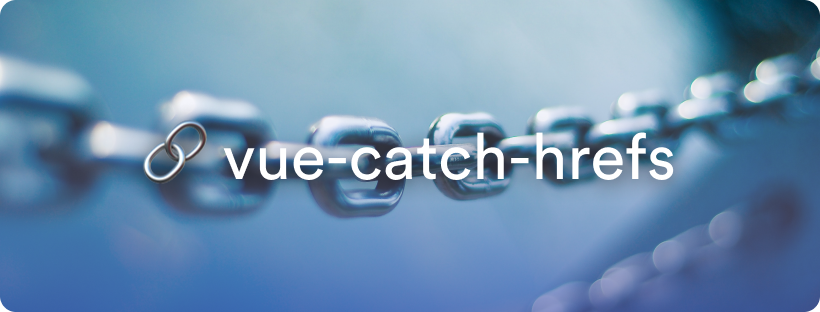README

vue-catch-hrefs
This plugin aims to catch clicks on <a href="..."> links referring to your app from user generated content in order to redirect them to your local vue-router.
This can be useful to parse links that you add to content from a headless cms, or from any API you consume.
Listening to the whole DOM allows us to trigger routing to the app from anywhere on the DOM, including outside your Vue app if it is bundled inside a page.
You can manipulate data and cancel events easily with the global event bus or with your path formatter.
Installation
Install the plugin from your favorite package manager.
npm install vue-catch-hrefs
Install the plugin in your app.
// Setup your router somehow [...]
import router from "./router"
// VueCatchHrefs imports
import VueCatchHrefs from "vue-catch-hrefs"
import pathFormatter from "~/your-plugins-path/pathFormatter"
Vue.use(VueCatchHrefs, pathFormatter)
Usage
The plugin listens to your apps clicks on elements.
From that, it catches up the href location and matches it with your app url.
If it does, then the content of the href is routed to your vue-router instance.
You can catch the content of the matched link from anywhere in your app using the global event bus.
You can also format the path using your own parameters with your own formatter.
Global event bus
The event bus can be used to listen the anchor links on the page and redirect them to your router or trigger action in components with it.
// ~/components/YourComponent.vue
import { routeEventBus } from "vue-catch-hrefs"
export default {
name: "YourComponent",
mounted() {
routeEventBus.$on("href", ({ url, path, from, event }) => {
// Your data manipulation...
console.log({
url, // The URL object matched from the href attribute
path, // The path matched after formatting
from, // The <a> element matched
event // The MouseEvent caught
})
})
}
}
Path formatter
The path formatter can be used to manipulate the data and/or cancel the redirection.
The formatter must return a string value, corresponding to the path that will be sent to your router, or false that will cancel the redirection and fire the original click on the href.
The string returned will be sent to your vue-router as a path attribute.
// ~/plugins/vue-catch-hrefs/path-formatter.js
export default (path, currentRoute) => {
// Remove the query params after the first one
if (path.indexOf("&") > -1) {
path = path.substring(0, path.indexOf("&"))
}
// If the link is an anchor path, cancel the redirection.
// This click will be handled through component event listener.
if (currentRoute.path + "#" === path) {
return false
}
// Return the path
return path
}
Once you have written your own path formatter, you have to add it to the plugin initialization.
To do so, pass it as a parameter in your Vue.use instruction.
Examples of usage
I'm using this plugin on Zouw.app to parse timecodes used in YouTube HTML descriptions from the YouTube API.
I'm also using it to re-route original YouTube links to my app.
I can listen to the events from the caught links clicks with the global event bus, and interact with the YouTube player using the data inside the original YouTube URL.
I also tried it on my personal website yael.dev, which is rendering HTML content from DatoCMS with Nuxt, and it works.
Credits
License
The MIT License (MIT). Please see License File for more information.